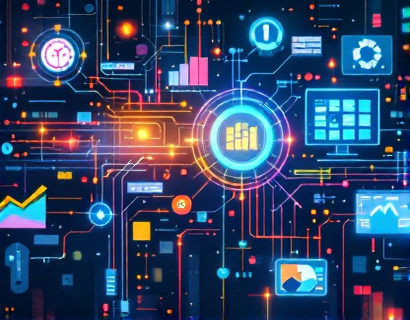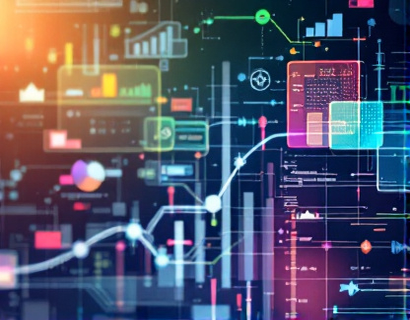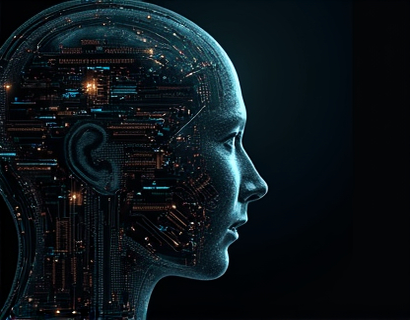Revolutionizing Digital Engagement: The Synergy of AI and Crypto
The intersection of artificial intelligence (AI) and cryptocurrency is ushering in a new era of digital engagement, transforming how users interact with online platforms and services. This convergence is not just a technological advancement but a paradigm shift that is redefining the digital ecosystem. By leveraging the strengths of both AI and crypto, innovators are creating solutions that enhance user experiences, ensure security, and unlock unprecedented opportunities for engagement and monetization.
Understanding the Basics: AI and Crypto
To fully appreciate the impact of AI and crypto on digital engagement, it's essential to understand the fundamental concepts of each technology. Artificial intelligence refers to the simulation of human intelligence processes by machines, particularly computer systems. These processes include learning (the acquisition of information and rules for using it), reasoning (using rules to reach approximate or definite conclusions), and self-correction. AI technologies such as machine learning, natural language processing, and computer vision are pivotal in analyzing vast amounts of data, recognizing patterns, and making intelligent decisions.
Cryptocurrency, on the other hand, is a digital or virtual currency that uses cryptography for security and operates on a decentralized network, typically a blockchain. Bitcoin, launched in 2009, was the first and most well-known cryptocurrency, but since then, thousands of alternative coins (altcoins) and tokens have emerged, each with unique features and use cases. The decentralized nature of crypto ensures transparency, security, and resistance to censorship, making it an attractive tool for various applications beyond just currency.
The Synergy of AI and Crypto
The combination of AI and crypto creates a powerful synergy that enhances the functionality and appeal of digital platforms. AI can process and analyze the vast amounts of data generated by blockchain transactions, providing insights that can optimize network performance, enhance security, and improve user experiences. Conversely, the decentralized and secure nature of crypto can provide a robust infrastructure for AI applications, ensuring data integrity and user privacy.
One of the most significant applications of this synergy is in the realm of smart contracts. Smart contracts are self-executing contracts with the terms of the agreement directly written into code. AI can enhance smart contracts by adding layers of intelligence, enabling more complex and dynamic agreements. For instance, AI can analyze market conditions and automatically adjust contract terms to optimize outcomes for all parties involved.
Enhancing User Engagement through AI and Crypto
User engagement is a critical factor for the success of any digital platform. The integration of AI and crypto offers innovative solutions to boost engagement by creating more interactive, secure, and rewarding experiences. Here are some ways this synergy is transforming user interaction:
- Personalized Experiences: AI algorithms can analyze user behavior and preferences to deliver personalized content and recommendations. In the context of crypto, this means tailored investment advice, customized wallet interfaces, and personalized news feeds. By understanding individual user patterns, platforms can enhance user satisfaction and retention.
- Decentralized Rewards Systems: Cryptocurrency enables the creation of decentralized rewards systems that incentivize user participation. AI can optimize these systems by analyzing user interactions and adjusting reward mechanisms to maximize engagement. For example, a decentralized social media platform could use AI to determine the most engaging content and reward users with tokens for creating and sharing high-quality posts.
- Enhanced Security: AI can significantly improve the security of crypto platforms by detecting and mitigating threats in real-time. Machine learning models can identify unusual patterns that may indicate fraudulent activity, ensuring a safer environment for users. This heightened security fosters trust and encourages more users to engage with crypto-based services.
- Interactive NFTs and Gamification: Non-fungible tokens (NFTs) combined with AI can create immersive and interactive experiences. AI can generate unique and dynamic NFTs that adapt to user interactions, making them more valuable and engaging. Gamification elements powered by AI can further enhance user engagement by creating challenging and rewarding experiences within crypto applications.
Case Studies: Real-World Applications
The potential of AI and crypto is not just theoretical; several projects are already demonstrating its practical applications:
Decentralized Finance (DeFi)
DeFi platforms are leveraging AI to create more efficient and user-friendly financial services. For instance, AI-driven lending protocols can assess creditworthiness more accurately and quickly than traditional methods, reducing the risk for both lenders and borrowers. Smart contracts powered by AI can automate complex financial transactions, ensuring transparency and reducing the need for intermediaries.
Crypto Art and Collectibles
The intersection of AI and crypto has given rise to the crypto art market, where AI-generated art is becoming increasingly popular. AI algorithms can create unique digital artworks, which are then tokenized as NFTs. These artworks can be bought, sold, and collected in a decentralized marketplace, providing artists with new revenue streams and collectors with exclusive digital assets. AI can also enhance the creation process by generating art based on user preferences or current trends.
Decentralized Social Media
Decentralized social media platforms are using AI to curate content and manage communities more effectively. These platforms can use AI to filter out spam and harmful content, ensuring a safer and more engaging environment for users. Token-based incentives can encourage users to contribute high-quality content, fostering a vibrant and interactive community. AI-driven analytics can help platform administrators understand user behavior and improve features accordingly.
Challenges and Considerations
While the integration of AI and crypto offers numerous benefits, it also presents several challenges that need to be addressed:
Regulatory Uncertainty
The crypto space is still navigating a complex regulatory landscape, and the addition of AI complicates matters further. Regulators are grappling with how to oversee decentralized and AI-driven platforms, ensuring they comply with existing laws while fostering innovation. Companies operating in this space must stay informed about regulatory developments and ensure their solutions are compliant.
Technical Complexity
The combination of AI and crypto involves sophisticated technologies that require specialized knowledge to implement and maintain. Developers need to be proficient in both AI algorithms and blockchain technology, which can be a barrier to entry for some projects. Additionally, ensuring the interoperability of AI and crypto systems is a significant technical challenge that needs to be overcome.
User Adoption
For AI and crypto to revolutionize digital engagement, widespread user adoption is essential. Educating users about the benefits and functionalities of these technologies is crucial. User-friendly interfaces and clear explanations can help bridge the knowledge gap and encourage more people to embrace these innovative solutions.
Future Prospects: The Road Ahead
The future of AI and crypto in digital engagement is promising, with several trends and developments on the horizon:
Increased Adoption of Blockchain Technology
As more industries recognize the benefits of blockchain, from supply chain management to healthcare, the adoption of blockchain technology is expected to grow. This expansion will create new opportunities for AI to enhance these systems, leading to more efficient and secure digital interactions.
Advancements in AI Algorithms
Continuous advancements in AI algorithms, particularly in areas like natural language processing and computer vision, will further enhance the capabilities of crypto applications. More sophisticated AI models will enable richer and more interactive user experiences, driving greater engagement and innovation.
Integration with Other Emerging Technologies
The convergence of AI, crypto, and other emerging technologies such as the Internet of Things (IoT) and 5G networks will create a more interconnected and intelligent digital ecosystem. IoT devices can generate vast amounts of data that AI can analyze, while 5G can facilitate faster and more reliable transactions, making the entire system more seamless and efficient.
Conclusion
The integration of AI and crypto is revolutionizing digital engagement by creating more interactive, secure, and rewarding experiences. This synergy is not only transforming how users interact with digital platforms but also opening up new opportunities for innovation and growth. As the technologies continue to evolve, those who embrace this convergence will be well-positioned to capitalize on the future of the digital ecosystem.











































